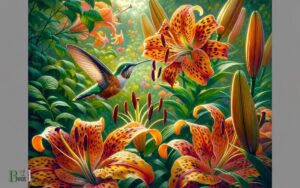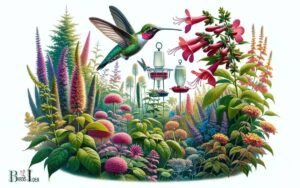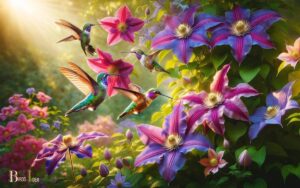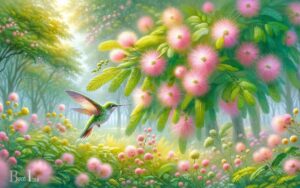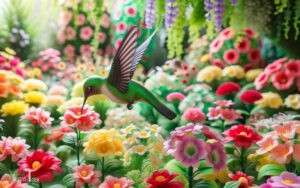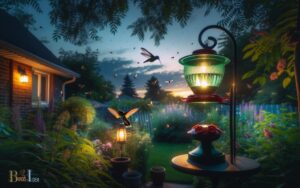Herbs That Attract Butterflies and Hummingbirds: Discover!
To attract butterflies and hummingbirds to your garden, consider planting herbs such as lavender, butterfly bush, bee balm, sage, thyme, and mint.
These plants offer vibrant flowers and a rich supply of nectar, providing a perfect habitat for these pollinators.
Butterflies and hummingbirds are drawn to gardens that offer a variety of nectar-rich flowers. Herbs can play a significant role in attracting these pollinators due to their fragrant blooms and essential nectar.
The following points highlight the key herbs that are known to attract butterflies and hummingbirds:
Attracting butterflies and hummingbirds enriches your garden’s beauty and supports local biodiversity.
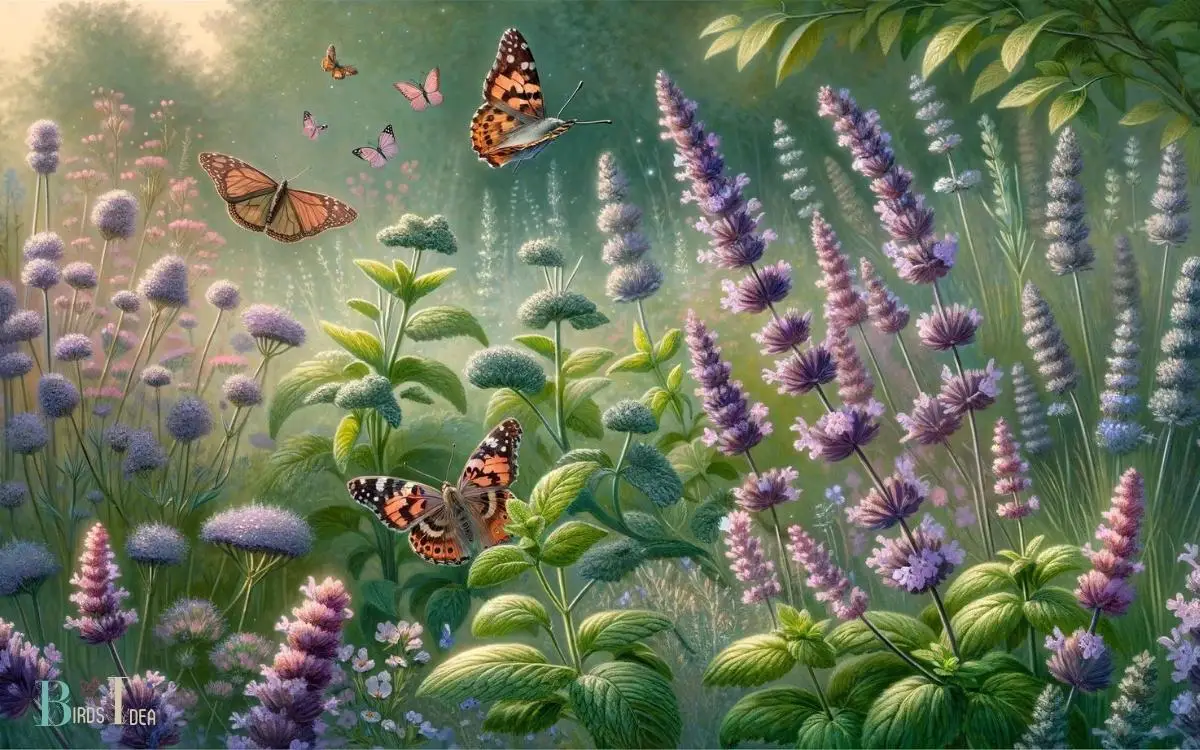
Key Takeaway
Best Herbs to Attract Butterflies and Hummingbirds
| Herb | Flower Color(s) | Attracts | Bloom Period |
|---|---|---|---|
| Lavender | Purple | Butterflies, Bees | Late spring – Summer |
| Butterfly Bush | Various | Butterflies, Hummingbirds | Summer – Fall |
| Bee Balm | Red, Pink, Purple | Butterflies, Hummingbirds, Bees | Summer |
| Sage | Blue, Purple | Butterflies, Hummingbirds | Spring – Fall |
| Thyme | White, Pink | Butterflies, Bees | Spring – Summer |
| Mint | White, Pink | Butterflies, Bees | Summer – Fall |
Lavender
Lavender is a fragrant herb known for attracting butterflies and hummingbirds to gardens. Its sweet, floral scent is appealing to these pollinators, drawing them in with its vibrant purple flowers.
Lavender contains nectar, which provides a valuable food source for butterflies and hummingbirds.
The plant’s long blooming period, from late spring to early fall, ensures a steady supply of nectar for these creatures.
Additionally, the shape and structure of lavender flowers make it easy for butterflies and hummingbirds to access the nectar.
The herb’s ability to thrive in well-drained soil and sunny conditions further enhances its attractiveness to these pollinators.
Overall, lavender serves as a vital resource for butterflies and hummingbirds, making it a popular choice for gardeners looking to attract these beautiful creatures.
Butterfly Bush
Butterfly bush is a flowering shrub that is well-known for attracting butterflies and hummingbirds to gardens.
The scientific name for butterfly bush is Buddleja davidii. This deciduous shrub blooms in various colors including purple, pink, white, and red. It thrives in well-drained soil and full sun, and it is relatively low maintenance.
The butterfly bush is characterized by its long, cone-shaped clusters of flowers that bloom from summer to fall. It emits a sweet, honey-like fragrance that further entices butterflies and hummingbirds.
The table below provides a summary of the key features of butterfly bush.
| Feature | Description |
|---|---|
| Scientific Name | Buddleja davidii |
| Flower Colors | Purple, pink, white, red |
| Preferred Growing Conditions | Well-drained soil, full sun |
| Blooming Period | Summer to fall |
Bee Balm
The next herb that attracts butterflies and hummingbirds is bee balm, also known as Monarda.
Bee balm is a flowering plant native to North America and belongs to the mint family, Lamiaceae. It is characterized by its vibrant, showy flowers that come in shades of red, pink, and purple.
The tubular shape of the flowers makes them particularly attractive to hummingbirds and certain butterfly species.
Bee balm produces a rich nectar that is a valuable food source for these pollinators. It thrives in well-drained soil and prefers full sun to partial shade.
Bee balm also has a pleasant, citrusy fragrance and is often used in herbal teas and essential oils.
Planting bee balm in the garden not only attracts these beautiful creatures but also adds a splash of color and fragrance to the landscape.
Sage
Sage, a perennial herb with aromatic leaves, is another plant that attracts butterflies and hummingbirds due to its abundant nectar and vibrant flowers.
Its appeal lies in:
- Abundant Nectar: Sage produces copious amounts of nectar, providing a rich food source for butterflies and hummingbirds.
- Vibrant Flowers: The colorful and showy flowers of sage are a magnet for butterflies and hummingbirds, drawing them in with their striking appearance.
- Long Blooming Period: Sage blooms for an extended period, providing a continuous nectar source for visiting butterflies and hummingbirds.
- Drought Tolerant: Sage is resilient and can thrive in dry conditions, making it a reliable option for attracting butterflies and hummingbirds in various environments.
Sage’s ability to provide sustenance and a visually appealing environment for these pollinators makes it a valuable addition to any garden.
Thyme
Thriving alongside sage, thyme is another herb that allures butterflies and hummingbirds with its delicate flowers and aromatic nectar.
Thyme, scientifically known as Thymus vulgaris, produces clusters of small, pink, lavender, or white flowers that bloom in the summer, attracting pollinators with their sweet fragrance.
The nectar of thyme flowers is rich in sugars and essential oils, providing a valuable food source for butterflies and hummingbirds.
This herb prefers well-drained soil and full sun, making it an ideal addition to butterfly and hummingbird gardens.
Additionally, thyme’s evergreen foliage provides shelter for small insects, which can also attract these beautiful creatures.
When planted alongside other nectar-rich flowers, thyme can contribute to a thriving habitat for butterflies and hummingbirds.
Mint
Mint, like thyme, is another herb that attracts butterflies and hummingbirds with its fragrant flowers and abundant nectar.
This herb is known for its ability to lure these beautiful creatures to gardens and outdoor spaces.
Here are some reasons why mint is an excellent choice for attracting butterflies and hummingbirds:
- Fragrant Flowers: Mint produces small, delicate flowers that emit a sweet aroma, which is highly attractive to butterflies and hummingbirds.
- Abundant Nectar: The flowers of the mint plant are a rich source of nectar, providing essential energy for butterflies and hummingbirds.
- Vibrant Colors: Mint flowers come in various vibrant colors, such as purple, pink, and white, which easily catch the attention of these creatures.
- Long Blooming Period: Mint has a prolonged blooming period, ensuring a continued food source for butterflies and hummingbirds throughout the season.
Conclusion
Lavender, butterfly bush, bee balm, sage, thyme, and mint are all excellent choices for attracting butterflies and hummingbirds to your garden.
These herbs not only provide nectar and food for these beautiful creatures but also add beauty and fragrance to your outdoor space.
By incorporating these plants into your garden, you can create a welcoming environment for butterflies and hummingbirds while enjoying the benefits of a thriving herb garden.

